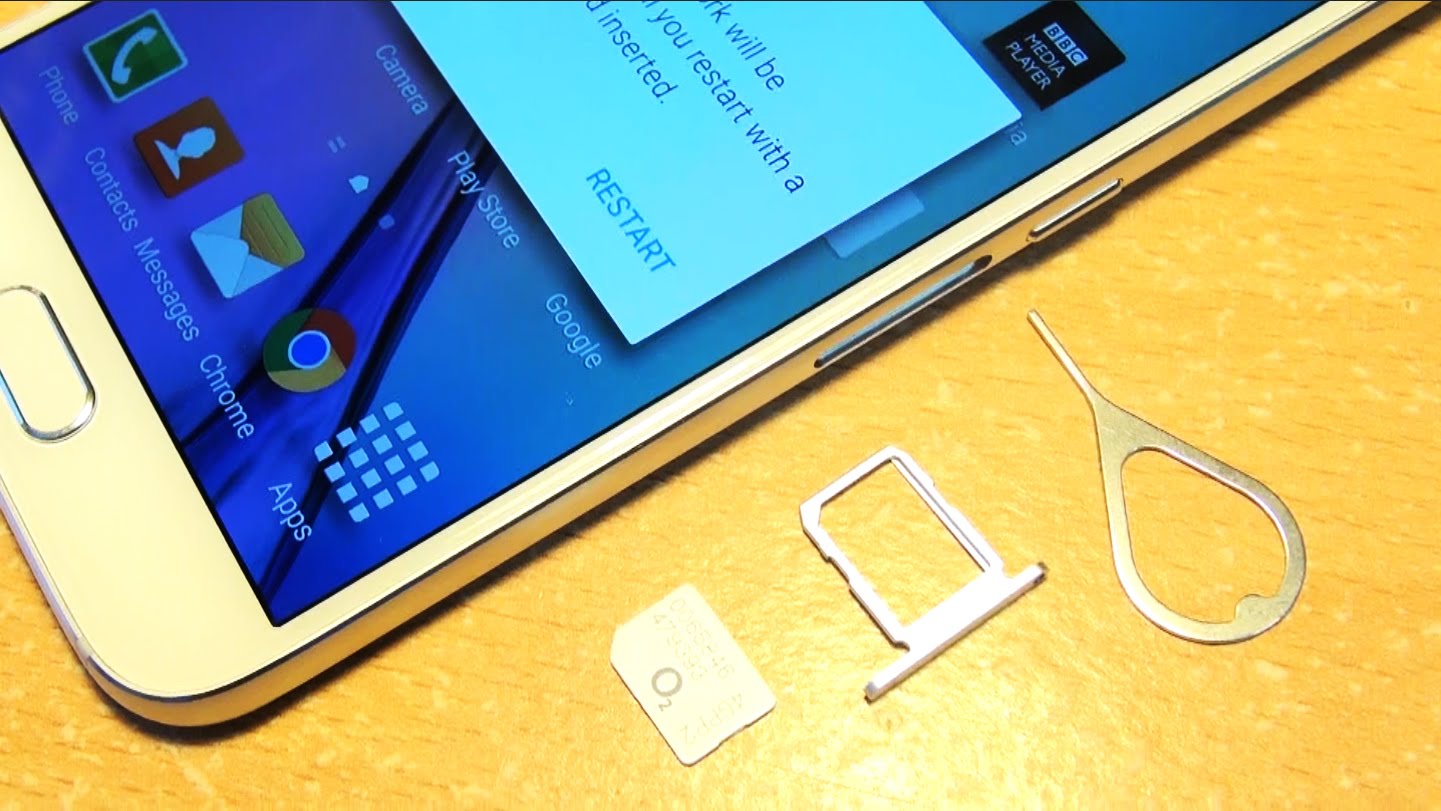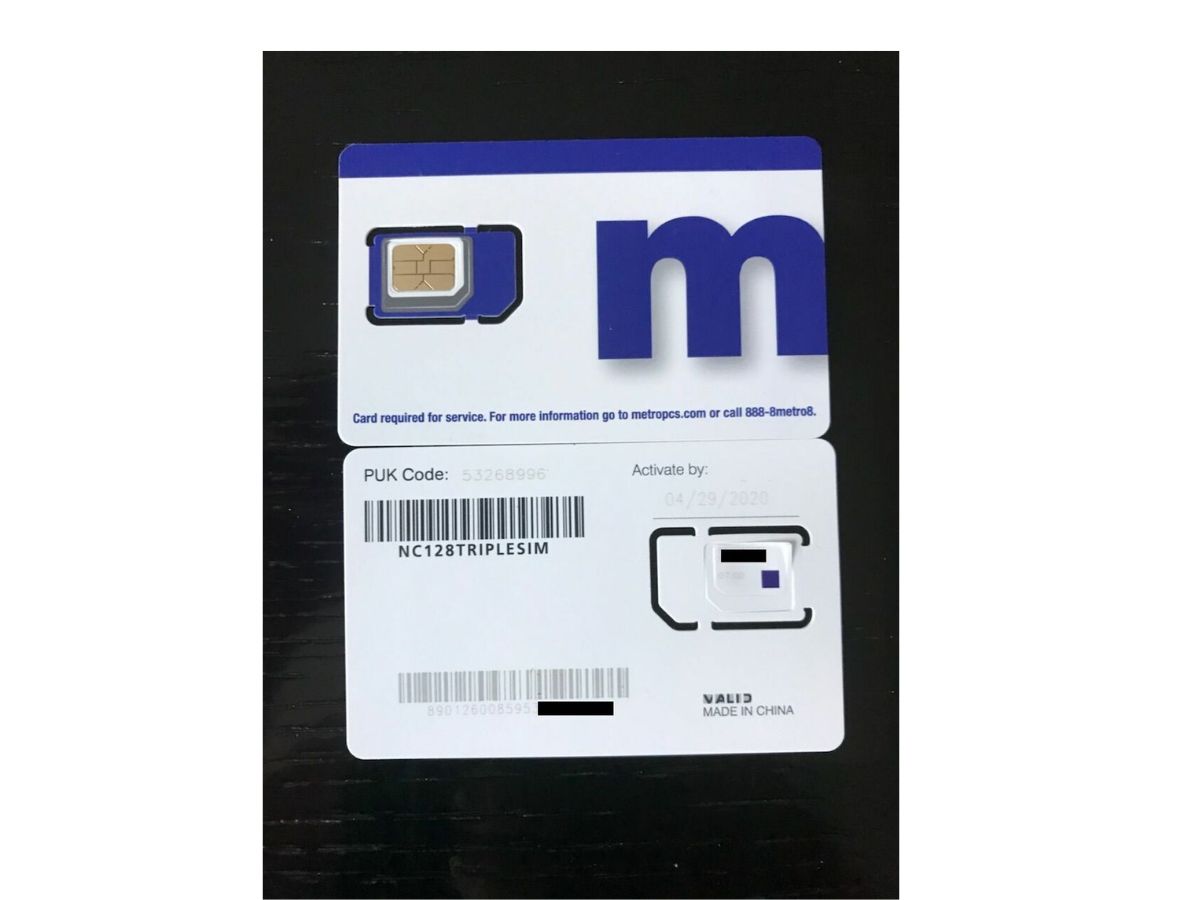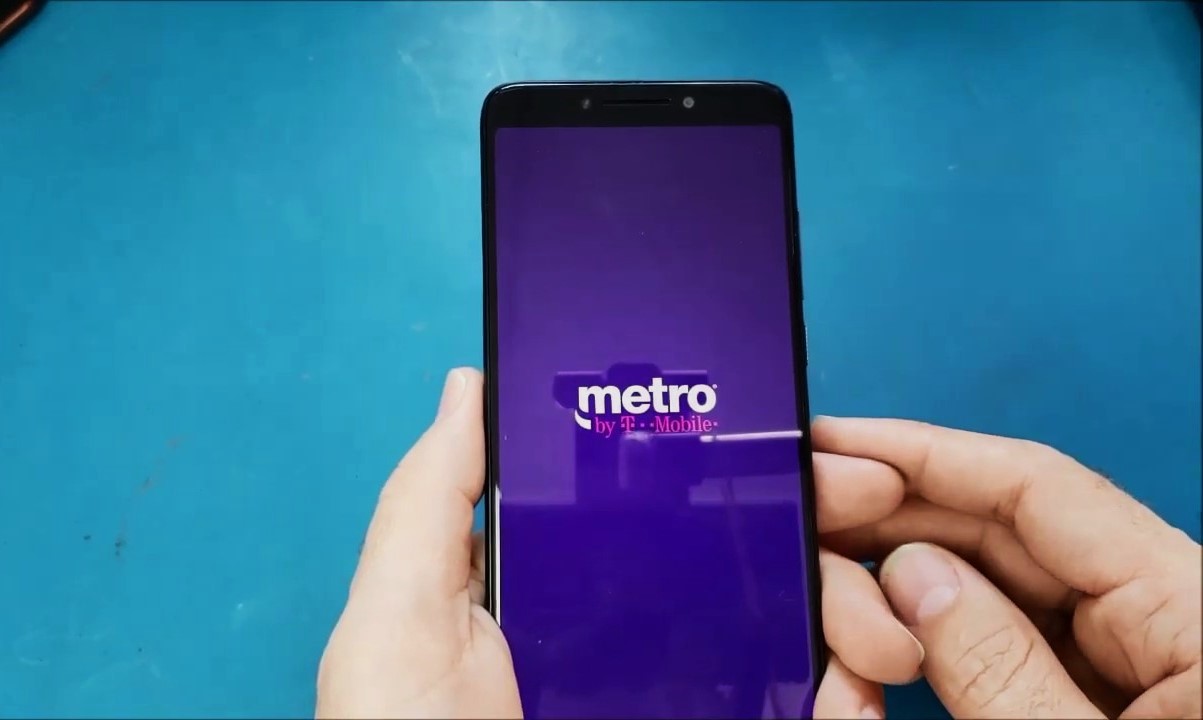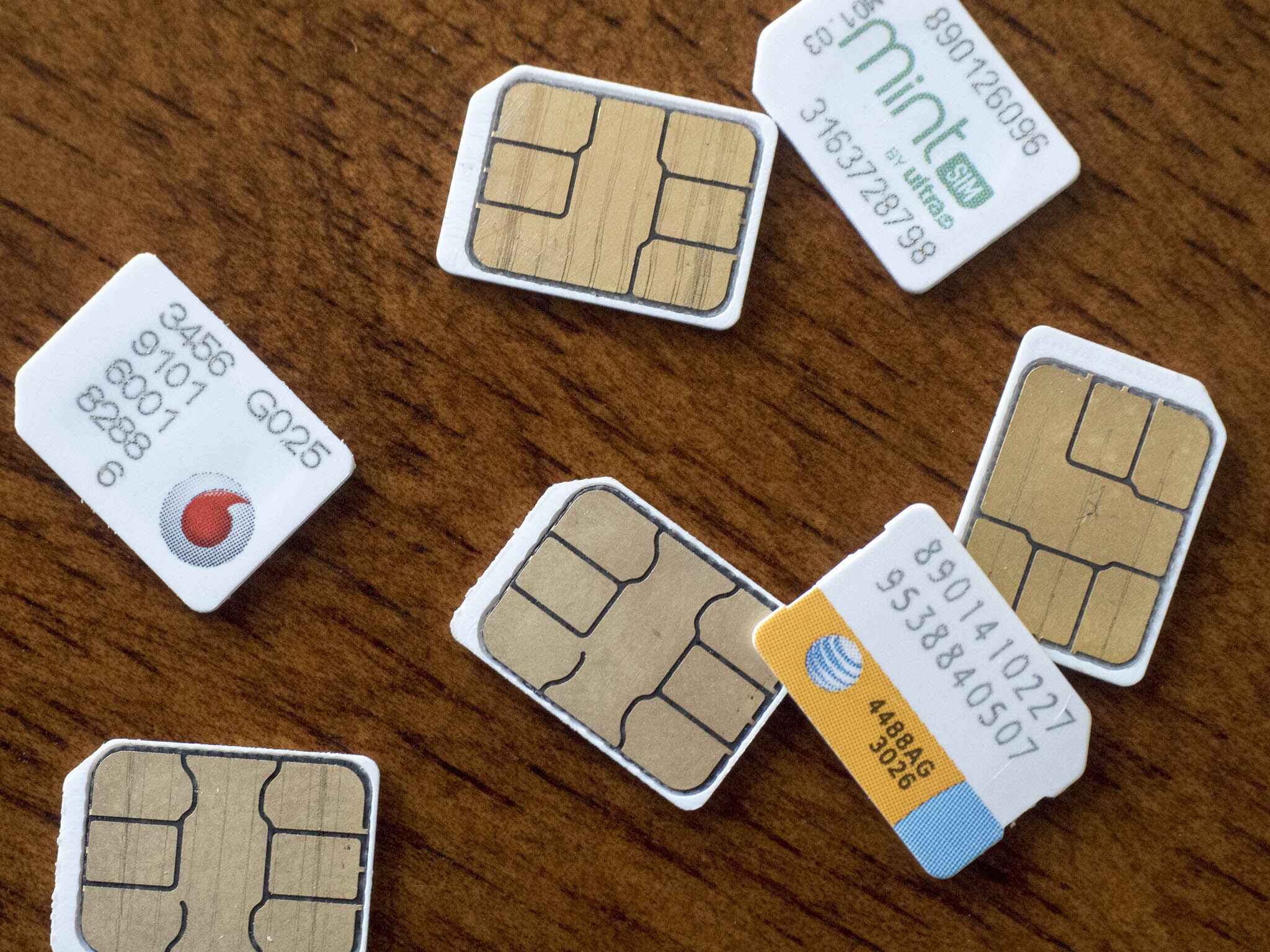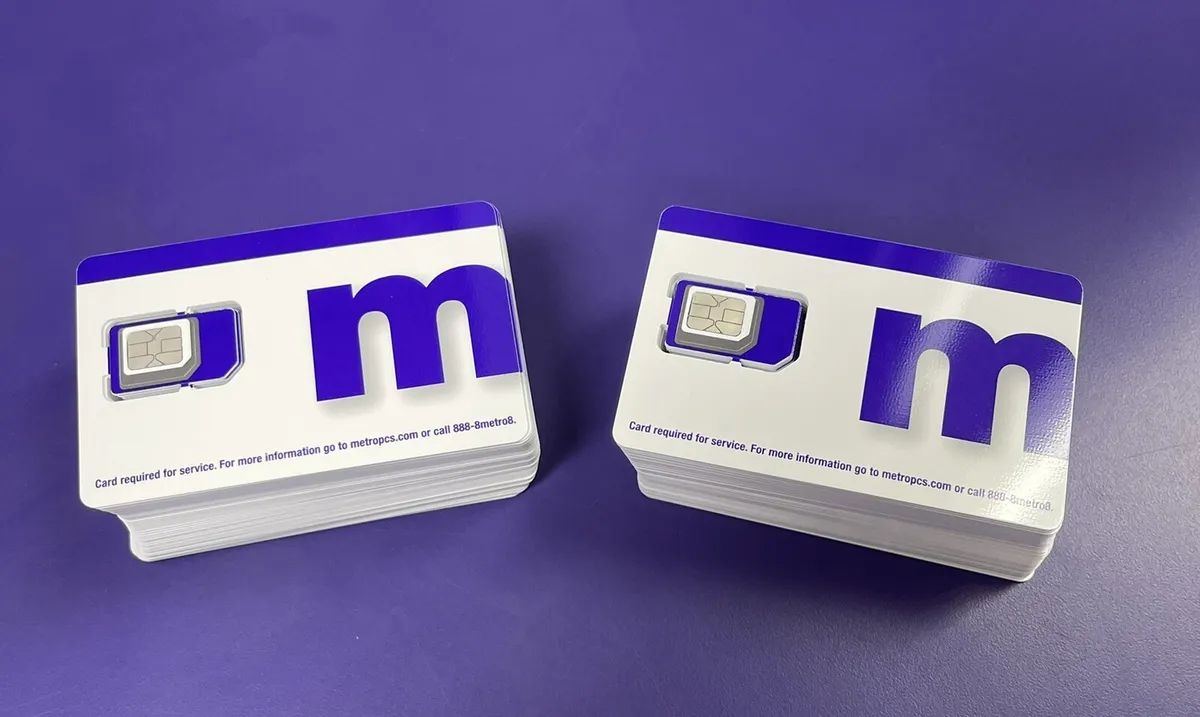Introduction
In the ever-evolving landscape of mobile technology, the ability to seamlessly switch SIM cards on Metro PCS has become increasingly important. Whether you're upgrading to a new device, traveling internationally, or simply seeking to optimize your mobile experience, understanding the process of switching SIM cards can unlock a world of possibilities.
With the rapid advancements in mobile devices, the Subscriber Identity Module (SIM) card has emerged as a pivotal component, serving as the linchpin that connects your device to your mobile network. This tiny, yet powerful, card contains essential information that enables your phone to make calls, send texts, and access mobile data. As such, the ability to switch SIM cards effectively is crucial for ensuring uninterrupted connectivity and a smooth transition between devices.
In this comprehensive guide, we will delve into the intricacies of SIM cards, shed light on the unique features of Metro PCS, and provide a step-by-step walkthrough on how to switch SIM cards seamlessly. Additionally, we will offer valuable tips to streamline the transfer process and optimize your mobile experience. By the end of this guide, you will be equipped with the knowledge and insights needed to navigate the world of SIM card switching with confidence and ease. So, let's embark on this journey to unlock the full potential of your mobile device on Metro PCS.
What is a SIM card?
A SIM card, short for Subscriber Identity Module, is a small, removable card that is inserted into mobile devices such as smartphones, tablets, and certain feature phones. It serves as the link between the device and the mobile network, enabling users to make calls, send texts, and access mobile data. The SIM card contains unique information that identifies the user to the mobile network, allowing for secure and personalized connectivity.
At its core, a SIM card holds crucial data, including the International Mobile Subscriber Identity (IMSI), which is a unique identifier for each individual user. This information is essential for authenticating the user's identity and enabling access to the mobile network. Additionally, the SIM card stores the Integrated Circuit Card Identifier (ICCID), which is a unique serial number used to identify the SIM card itself. These identifiers play a key role in ensuring secure and efficient communication between the device and the mobile network.
SIM cards come in various sizes, including standard SIM, micro SIM, and nano SIM, to accommodate different types of mobile devices. The evolution of SIM card technology has led to the development of embedded SIMs, also known as eSIMs, which are integrated directly into the device and can be reprogrammed remotely. This innovation has streamlined the activation and switching process for users, offering greater flexibility and convenience.
In addition to facilitating communication, SIM cards also store contacts, text messages, and other personalized data. This feature allows users to seamlessly transfer their contacts and messages when switching to a new device, ensuring continuity and ease of use.
Furthermore, SIM cards play a crucial role in enabling roaming services, allowing users to maintain connectivity while traveling internationally. By inserting a local SIM card at their destination, users can avoid exorbitant roaming charges and enjoy affordable local calling and data services.
Overall, SIM cards are integral to the functionality of mobile devices, serving as the gateway to personalized and secure communication. Understanding the significance of SIM cards is essential for navigating the intricacies of mobile connectivity and optimizing the user experience on Metro PCS and other mobile networks.
What is Metro PCS?
Metro by T-Mobile, commonly known as Metro PCS, is a prepaid wireless service provider that offers affordable and feature-rich mobile plans to customers across the United States. As a subsidiary of T-Mobile US, Inc., Metro PCS leverages T-Mobile's robust network infrastructure to deliver reliable and high-speed connectivity to its subscribers.
One of the key distinguishing factors of Metro PCS is its focus on providing cost-effective plans without compromising on the quality of service. The company's prepaid model allows customers to enjoy the benefits of a postpaid plan, such as unlimited talk, text, and data, without being tied down by long-term contracts or credit checks. This flexibility has made Metro PCS a popular choice for individuals and families seeking budget-friendly mobile solutions.
In addition to its competitive pricing, Metro PCS offers a diverse range of mobile devices, including smartphones and feature phones, catering to varying preferences and budget constraints. The availability of popular devices, coupled with affordable plans, has positioned Metro PCS as a compelling option for consumers looking to access the latest technology without breaking the bank.
Furthermore, Metro PCS places a strong emphasis on customer satisfaction, striving to provide a seamless and enjoyable mobile experience. The company's customer support initiatives and user-friendly policies have contributed to its reputation as a customer-centric wireless service provider.
With an extensive network footprint and a commitment to innovation, Metro PCS continues to expand its offerings, introducing new features and services to meet the evolving needs of mobile users. Whether it's unlimited data plans, mobile hotspot capabilities, or international calling options, Metro PCS remains dedicated to enhancing the overall mobile experience for its subscribers.
As part of the T-Mobile family, Metro PCS benefits from T-Mobile's nationwide network coverage, enabling customers to stay connected across urban and rural areas. This expansive coverage, coupled with T-Mobile's investment in advanced technologies such as 5G, ensures that Metro PCS users can enjoy reliable and high-speed connectivity wherever they go.
In essence, Metro PCS stands as a testament to affordable innovation in the mobile industry, empowering individuals and families to access quality wireless services without compromising on value or performance. As we delve into the intricacies of switching SIM cards on Metro PCS, understanding the unique features and offerings of this wireless service provider will be instrumental in navigating the SIM card transfer process with confidence and ease.
Why would you need to switch SIM cards on Metro PCS?
Switching SIM cards on Metro PCS may become necessary for a variety of reasons, each tied to the dynamic nature of mobile connectivity and user preferences. Understanding the circumstances that warrant a SIM card switch is crucial for optimizing the mobile experience and ensuring uninterrupted access to essential services. Here are several scenarios that may prompt the need to switch SIM cards on Metro PCS:
-
Device Upgrade: When upgrading to a new mobile device, whether it's a smartphone or a tablet, switching SIM cards is essential to ensure that the new device is properly connected to the Metro PCS network. As SIM cards are uniquely tied to specific devices, transferring the existing SIM card to the new device allows for seamless activation and continued access to mobile services.
-
International Travel: For individuals planning to travel internationally, switching to a local SIM card at the destination can unlock significant benefits. By using a local SIM card, travelers can avoid exorbitant roaming charges and access affordable local calling and data services, enhancing their connectivity while abroad.
-
Network Compatibility: In some cases, users may need to switch SIM cards to ensure compatibility with network upgrades or technology advancements. For example, with the rollout of 5G networks, users may need to switch to a 5G-compatible SIM card to access the full spectrum of high-speed data services offered by Metro PCS.
-
Device Replacement: In the event of a lost, damaged, or malfunctioning device, switching the SIM card to a replacement device is essential for maintaining connectivity and accessing essential mobile services. This seamless transfer ensures that users can swiftly resume their mobile activities without disruption.
-
SIM Card Activation: For new Metro PCS subscribers, switching SIM cards involves the activation of the new SIM card, enabling them to connect to the Metro PCS network and start using their mobile services. This process is essential for onboarding new users and ensuring a smooth transition to the Metro PCS ecosystem.
-
Enhanced Features and Services: Metro PCS may introduce new features, services, or promotions that require users to switch to a specific SIM card to access these offerings. Whether it's enhanced data plans, mobile hotspot capabilities, or promotional benefits, switching SIM cards can unlock a range of additional features and services.
By recognizing the diverse scenarios that necessitate a SIM card switch on Metro PCS, users can proactively manage their mobile connectivity and adapt to changing circumstances with ease. Whether it's embracing the latest technology, optimizing international travel, or seamlessly transitioning to a new device, the ability to switch SIM cards empowers users to tailor their mobile experience to their unique needs and preferences.
How to switch SIM cards on Metro PCS
Switching SIM cards on Metro PCS involves a straightforward process that allows users to seamlessly transition between devices, access enhanced features, and adapt to changing connectivity needs. Whether it's upgrading to a new smartphone, activating a new SIM card, or preparing for international travel, understanding the steps involved in switching SIM cards is essential for optimizing the mobile experience. Here's a comprehensive guide on how to switch SIM cards on Metro PCS:
-
Gather Essential Information: Before initiating the SIM card switch, it's important to gather essential information such as the new SIM card's ICCID (Integrated Circuit Card Identifier) and the device's IMEI (International Mobile Equipment Identity). The ICCID can typically be found on the SIM card itself, while the IMEI is often located on the device's packaging or can be retrieved by dialing *#06# on the device.
-
Power Off the Device: To ensure a safe and successful SIM card switch, power off the device before removing the existing SIM card. This simple step helps prevent any potential issues during the transfer process.
-
Locate the SIM Card Slot: Depending on the device model, the SIM card slot may be located on the side, top, or back of the device. Use the SIM card ejection tool or a small paperclip to gently eject the SIM card tray from the device.
-
Remove the Existing SIM Card: Carefully remove the existing SIM card from the device by gently pushing the SIM card tray out and sliding the SIM card out of the tray. Handle the SIM card with care to avoid damaging it.
-
Insert the New SIM Card: Place the new SIM card into the SIM card tray, ensuring that it fits securely. Align the notched corner of the SIM card with the corresponding notch on the tray to ensure proper orientation.
-
Reinsert the SIM Card Tray: Once the new SIM card is securely placed in the tray, carefully reinsert the SIM card tray into the device. Ensure that the tray is inserted in the correct orientation to avoid any issues.
-
Power On the Device: After the new SIM card is inserted, power on the device and allow it to initialize. The device will automatically detect the new SIM card and establish connectivity with the Metro PCS network.
-
Activation and Verification: In some cases, the new SIM card may require activation. Follow any on-screen prompts or instructions provided by Metro PCS to complete the activation process. Additionally, verify that the device is connected to the Metro PCS network and that essential services such as calling, texting, and data are functioning as expected.
By following these steps, users can seamlessly switch SIM cards on Metro PCS, ensuring a smooth transition and uninterrupted access to essential mobile services. Whether it's upgrading to a new device or activating a new SIM card, mastering the art of SIM card switching empowers users to adapt to evolving connectivity needs with confidence and ease.
Tips for a seamless transfer
Ensuring a seamless transfer when switching SIM cards on Metro PCS is essential for maintaining uninterrupted connectivity and optimizing the mobile experience. To facilitate a smooth transition and minimize potential challenges, consider the following tips for a seamless SIM card transfer:
-
Backup Essential Data: Before initiating the SIM card switch, it's advisable to back up essential data such as contacts, messages, and personal files. This precautionary step ensures that valuable information is safeguarded and can be easily transferred to the new device or SIM card.
-
Check Device Compatibility: When upgrading to a new device, verify that the device is compatible with the Metro PCS network and supports the desired SIM card size. Ensuring compatibility eliminates potential issues and streamlines the activation process.
-
Verify Network Coverage: Before switching SIM cards, verify the network coverage and availability of services in the desired location. This is particularly important for international travelers, as it allows for informed decisions regarding the use of local SIM cards.
-
Understand Activation Procedures: Familiarize yourself with the activation procedures for the new SIM card, especially if it's a replacement or an upgraded SIM. Understanding the activation process can expedite the transition and minimize any potential delays.
-
Secure SIM Card Removal: When removing the existing SIM card from the device, handle it with care to avoid damage. Additionally, store the old SIM card in a safe place, as it may contain valuable data or serve as a backup in case of unforeseen issues with the new SIM card.
-
Test Essential Functions: After switching the SIM card, test essential functions such as calling, texting, and data connectivity to ensure that the new SIM card is functioning as expected. Address any connectivity issues promptly to avoid prolonged disruptions.
-
Explore Additional Services: Take the opportunity to explore any additional services or features offered by Metro PCS with the new SIM card. This may include access to enhanced data plans, mobile hotspot capabilities, or promotional benefits that can enrich the mobile experience.
-
Seek Customer Support if Needed: If you encounter any challenges during the SIM card switch, don't hesitate to reach out to Metro PCS customer support for assistance. The support team can provide guidance and troubleshooting to facilitate a smooth transfer process.
By adhering to these tips, users can navigate the process of switching SIM cards on Metro PCS with confidence and ease, ensuring a seamless transfer that aligns with their connectivity needs and device preferences. Whether it's embracing a new device or preparing for international travel, leveraging these tips can enhance the overall experience of switching SIM cards on Metro PCS.
Conclusion
In conclusion, the process of switching SIM cards on Metro PCS is a pivotal aspect of managing mobile connectivity and adapting to evolving technology and user needs. Understanding the significance of SIM cards, the unique features of Metro PCS, and the steps involved in switching SIM cards empowers users to navigate the mobile landscape with confidence and ease.
The versatility of SIM cards as the gateway to personalized and secure communication underscores their importance in the realm of mobile devices. From facilitating essential services such as calling and texting to enabling seamless transitions between devices, SIM cards play a fundamental role in shaping the mobile experience. As users embark on the journey of switching SIM cards, they gain a deeper appreciation for the intricate technology that underpins their connectivity.
Metro PCS, with its commitment to affordability, innovation, and customer satisfaction, stands as a beacon of value-driven wireless services. The prepaid model, coupled with a diverse range of mobile devices and customer-centric initiatives, has positioned Metro PCS as a compelling choice for individuals and families seeking reliable and cost-effective mobile solutions. By understanding the unique features and offerings of Metro PCS, users can make informed decisions when switching SIM cards and harness the full potential of the network's capabilities.
The scenarios that prompt the need to switch SIM cards, including device upgrades, international travel, and network compatibility, underscore the dynamic nature of mobile connectivity. Whether it's adapting to the latest technology, optimizing international travel, or seamlessly transitioning to a new device, the ability to switch SIM cards empowers users to tailor their mobile experience to their unique needs and preferences.
The comprehensive guide on how to switch SIM cards on Metro PCS, coupled with valuable tips for a seamless transfer, equips users with the knowledge and insights needed to navigate the process with ease. By following the recommended steps and leveraging the provided tips, users can ensure uninterrupted connectivity and optimize their mobile experience on Metro PCS.
In essence, the process of switching SIM cards on Metro PCS represents a gateway to enhanced connectivity, personalized services, and seamless transitions. As users embrace the evolving landscape of mobile technology, mastering the art of SIM card switching unlocks a world of possibilities, enabling them to stay connected, adapt to change, and make the most of their mobile devices on Metro PCS.










